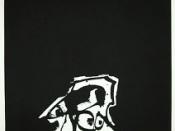Latin American films have always been about more than just the film. Often you get a feeling that the artist who creates these films has this certain message behind every scene, every moment, every camera shot. Cuban cinema is no different, ever since the first Cuban film was created in 1897, Cuban cinema has captured the imagination of countless Cubans and non-Cubans. During the Republican period more than eighty fiction movies were filmed. But this would not be the classic period; this would be later, after the revolution when the biases of cinematographic industry were set to develop the national cinema. In 1959 the Cuban Institute of Cinematographic Art and Industry (ICAIC) was founded, and in 1960 the "Cuban Cine" magazine was founded, sponsored by the ICAIC. This magazine promoted the creative actions in the film industry. In that same year Tomas Guitierrezx Alea presented his Histories of the Revolution, first fiction film.
At this first stage, called by the critics "the golden decade of Cuban Cinema", the most outstanding films shown were: Death of a Bureaucrat and Memories of Underdevelopment, both directed by Tomas. Cuban film continued to flourish even out side the country with such films as El Super.
Cuba has been a cornerstone for filmmakers of all types for many years. From such films as the Buena Vista Social Club to Improper Conduct we see that Cuba can be seen from two totally different standpoints. Often Cuba is looked at as the outcast, as the island that has been torn apart by years of revolution that has not gotten it anywhere. This view can be seen in many films of this era. For example in Buena Vista Social Club we see a once magnificent place now only remembered by stories. These stories are to be elaborated...


